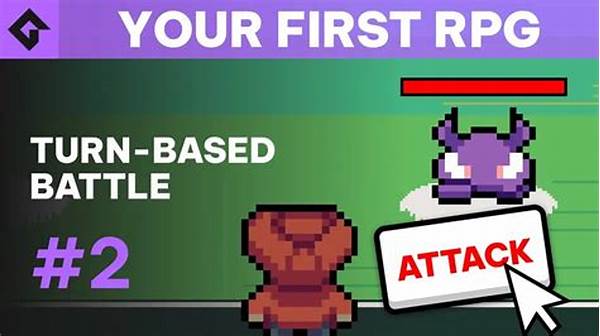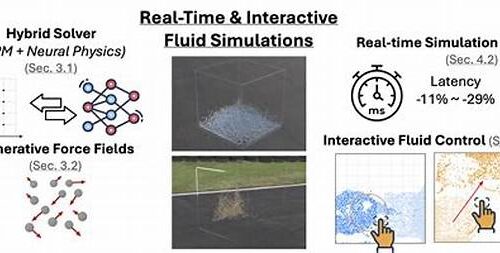Hello, fellow adventurers and aspiring game creators! So, you’ve decided to embark on the exciting journey of creating your first RPG game, huh? That’s fantastic! It’s like crafting an interactive tale where you hold the quill and decide the fate of your characters. Let’s dive into this new adventure together and break it down into manageable, fun-sized steps.
Read Now : Parallel Processing For Fluid Effects
Getting Started with Your RPG Adventure
When it comes to creating your first RPG game, there’s an entire world of creativity at your fingertips. Imagine crafting characters, storylines, and vast lands filled with mystery and adventure. You’ll need to choose a platform to develop your game—are you leaning towards a traditional PC game, or maybe a mobile-friendly RPG? Each platform has its own set of tools and languages, and it’s essential to pick one that aligns with your vision.
As you embark on this journey, think of the storyline as the backbone of your game. It’s crucial to devise intriguing characters and plot twists that will keep players engaged. Consider your favorite RPGs and what made them so captivating—was it the rich character development, the gripping narrative, or the immersive world-building? With those elements in mind, begin sketching out your world and characters, letting your imagination run wild. Creating your first RPG game is all about blending those imaginative elements with technical skills, leading to a thrilling creation that players can’t resist exploring.
The design and aesthetics will also play a significant role. Finding your art style is key, whether it’s a pixelated retro look or a sleek modern design. Visuals will bring your story to life, so take the time to experiment and discover what suits your game best.
Choosing the Right Tools
Creating your first RPG game involves selecting the best tools for game development. Platforms like Unity and RPG Maker are fantastic starting points. They offer user-friendly interfaces, powerful scripting capabilities, and a supportive community, making them perfect for beginners.
Your choice of tools will significantly impact your development process. Unity, for instance, is a favorite among indie developers due to its versatility and robust features. Meanwhile, RPG Maker simplifies the process, especially for those who are more interested in storytelling than coding.
Consider budget and scalability when picking tools. Free versions are available, but investing in premium tools might be worthwhile if you’re serious about pursuing game development. Creating your first RPG game is about finding a platform that grows along with your skills.
An active online community is crucial. Platforms with large communities provide essential tutorials, forums for questions, and plugin support, making your game development journey smoother. Engaging with these communities can also spark new ideas.
Testing is another factor. Choose tools that offer comprehensive testing options to ensure your RPG runs smoothly across devices, avoiding player frustration. Remember, creating your first RPG game is a learning process – the right tools can make this experience both educational and enjoyable.
Crafting Compelling Characters and Plot
In the realm of RPGs, characters and plot are the heart and soul. As you delve into creating your first RPG game, focus on creating characters that feel real and a plot that’s engaging. Players should embark on a journey that unfolds like a gripping novel, full of twists and turns, challenges, and triumphs.
Begin by envisioning protagonists and antagonists with depth. What are their motivations, and what personal stories will unfold as players progress? This depth will keep your audience emotionally invested in the game. Don’t forget secondary characters that enrich the world and provide variety.
As for the plot, think of incorporating multiple story arcs and subplots that weave together, providing players with choices that impact their journey. This non-linear storytelling approach will add replayability, a critical element in successful RPGs. Creating your first RPG game should offer freedom and consequence to the player’s decisions.
A vibrant world enhances your characters and narrative. Design rich backdrops for their adventures, from bustling cityscapes to mysterious forests. The world should be an extension of the story that draws players in, making exploring a delight rather than a chore.
Bringing Mechanics to Life
Creating your first RPG game also entails constructing intricate game mechanics. Establishing rules and systems that govern how players interact with your world is essential. Think about combat systems, leveling up, and skill trees, all of which will enhance the player’s experience.
Balancing is crucial; too easy, and players lose interest, too difficult, and they become frustrated. Tinker with the mechanics until you find that sweet spot that keeps players engaged and motivated. Use feedback from early testers to refine your systems.
Narrative mechanics are just as important. Design choices should reflect in mechanics — players’ decisions impacting the storyline is a staple in RPG creation. This interactive storytelling is what will set your game apart, making the experience personal to each player.
Read Now : Fast Surface Morphing Technologies
Consider economy and resource management as part of the systems. How will players acquire items, and what resources are scarce? A well-balanced economy adds depth and encourages strategic gameplay, increasing the game’s longevity and satisfaction. Remember, the key to creating your first RPG game is ensuring cohesion between narrative and interactive elements.
Testing and Feedback
Once your RPG takes shape, testing becomes your best friend. Testing is not just a technical check, but a chance to gather real player feedback, an imperative part of creating your first RPG game. You want to know how the players perceive the world you’ve so meticulously built.
Begin with small focus groups, observing how they interact with characters, mechanics, and most importantly, how they immerse themselves in the plot. Learning from their experience will help you identify areas that need polishing, whether it be pacing issues, unclear instructions, or balancing the combat system.
Iterate based on the feedback. Don’t be afraid to refine sections of the game to enhance the overall enjoyment. This part of creating your first RPG game can be painstaking, but it’s also where you see your game evolve into its best version.
Communication is key. Regular updates about bug fixes or game changes based on user feedback maintain positive interactions with your potential player base. Transparency builds a community around your game and fuels excitement for the final release.
From Idea to Final Product
Creating your first RPG game transforms an abstract idea into a living, breathing world. It’s a monumental task that requires passion, patience, and perseverance. However, the rewards of seeing players immerse themselves in your creation are immense.
You start with a spark of inspiration, crafting characters and worlds from your imagination. Then comes the detailed work of developing these ideas into tangible game elements, spending countless hours fine-tuning gameplay mechanics and story arcs.
Throughout, remember why you started this project. Whether it’s the love of storytelling, the thrill of game design, or the joy of technology, keep that motivation as your guiding star. Challenges will arise, but your initial passion will help persevere through them.
Finally, when your RPG is ready to launch, prepare for the thrill and anxiety of sharing your masterpiece with the world. Watch as players embark on the journey you’ve crafted, reacting to every twist and turn. Creating your first RPG game is not merely a project, but a personal journey that leaves a lasting legacy in the gaming world.
Maintaining Momentum
Post-launch, creating your first RPG game continues. Player feedback rolls in, updates loom, and perhaps new content beckons. Maintain momentum by keeping in touch with your player community. Listen to their experiences and stories about their time spent in your world.
Updates and new content are vital. Consider expansions, DLCs, or even sequel possibilities to sustain interest and engagement. A living game is one that evolves alongside its community, broadening the experience and keeping players returning for more adventures.
Stay passionate and curious. Follow trends and new technologies that could enhance your game in future updates. This proactive improvement keeps your skills sharp and opens up potential opportunities in the broader game development industry.
Overall, creating your first RPG game is the beginning of an exciting adventure. You’ve opened the doors to a world of endless possibilities where your creativity and skills create something truly remarkable. So embrace this journey, for it could be the first of many fantastic tales you bring to life.





